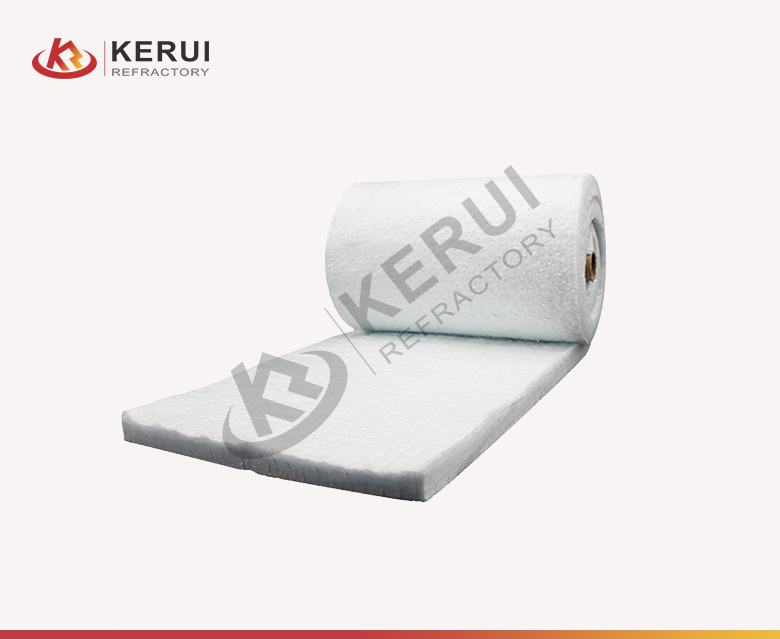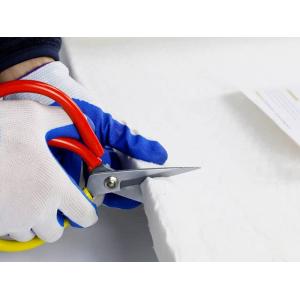Contact person: Ms. red
Position: Chaohua Refractory Industry Zone, Xinmi City, Henan Province, China.
Address: Chaohua Refractory Industry Zone, Xinmi City, Henan Province, China.
Country: China
Phone: 0086 181 0381 7770 - Mobi: 0086 181 0381 7770
How Does It Work?
Price:
In industries where high temperatures are the norm, finding effective insulation solutions is crucial for maintaining efficiency, safety, and productivity. Refractory blanket insulation has emerged as a popular choice for its ability to withstand extreme heat and provide superior thermal insulation. This article explores what refractory blanket insulation is and how it works to protect equipment and structures in high-temperature environments.

Understanding Refractory Blanket Insulation
Refractory blanket insulation, also known as ceramic fiber blanket insulation, is a type of high-temperature insulation material made from alumina-silica ceramic fibers. These fibers are lightweight, flexible, and resistant to thermal shock, making them ideal for applications where traditional insulation materials would fail under extreme heat conditions.
How Does Refractory Blanket Insulation Work?
High Temperature Resistance: Refractory blanket insulation is engineered to withstand extremely high temperatures, typically up to 2300°F (1260°C) or higher. This heat resistance is crucial for applications such as furnace linings, kiln insulation, and heat shields, where exposure to intense heat is constant.
Thermal Insulation Properties: The primary function of refractory blanket insulation is to provide excellent thermal insulation, minimizing heat transfer and maintaining uniform temperatures within equipment and structures. This helps in reducing energy consumption and ensuring consistent performance in industrial processes.
Low Thermal Conductivity: Refractory blanket insulation has low thermal conductivity, meaning it effectively prevents heat from transferring through the material. This property is essential for minimizing heat loss and optimizing energy efficiency in high-temperature environments.
Flexibility and Versatility: One of the advantages of refractory blanket insulation is its flexibility and versatility. It can be easily cut, shaped, and installed to fit various equipment and structural requirements, allowing for customization and efficient insulation of complex shapes and surfaces.
Resistance to Chemicals and Corrosion: Refractory blanket insulation exhibits high chemical stability, resisting attack from most acids, alkalis, and solvents. This makes it suitable for use in environments where corrosive chemicals are present, such as chemical processing plants and industrial furnaces.
Durability and Longevity: Despite its lightweight and flexible nature, refractory blanket insulation is durable and long-lasting, able to withstand the rigors of industrial operations. Its resistance to thermal shock ensures that it remains intact even in environments with rapid temperature fluctuations.
Conclusion
Refractory blanket insulation is a highly effective solution for thermal insulation in high-temperature environments. Its ability to withstand extreme heat, provide excellent thermal insulation, resist chemicals and corrosion, and offer flexibility and durability makes it a preferred choice for industries such as steelmaking, glass manufacturing, petrochemical processing, and more. By understanding how refractory blanket insulation works, industries can effectively protect their equipment and structures while optimizing energy efficiency and maintaining operational reliability.

Understanding Refractory Blanket Insulation
Refractory blanket insulation, also known as ceramic fiber blanket insulation, is a type of high-temperature insulation material made from alumina-silica ceramic fibers. These fibers are lightweight, flexible, and resistant to thermal shock, making them ideal for applications where traditional insulation materials would fail under extreme heat conditions.
How Does Refractory Blanket Insulation Work?
High Temperature Resistance: Refractory blanket insulation is engineered to withstand extremely high temperatures, typically up to 2300°F (1260°C) or higher. This heat resistance is crucial for applications such as furnace linings, kiln insulation, and heat shields, where exposure to intense heat is constant.
Thermal Insulation Properties: The primary function of refractory blanket insulation is to provide excellent thermal insulation, minimizing heat transfer and maintaining uniform temperatures within equipment and structures. This helps in reducing energy consumption and ensuring consistent performance in industrial processes.
Low Thermal Conductivity: Refractory blanket insulation has low thermal conductivity, meaning it effectively prevents heat from transferring through the material. This property is essential for minimizing heat loss and optimizing energy efficiency in high-temperature environments.
Flexibility and Versatility: One of the advantages of refractory blanket insulation is its flexibility and versatility. It can be easily cut, shaped, and installed to fit various equipment and structural requirements, allowing for customization and efficient insulation of complex shapes and surfaces.
Resistance to Chemicals and Corrosion: Refractory blanket insulation exhibits high chemical stability, resisting attack from most acids, alkalis, and solvents. This makes it suitable for use in environments where corrosive chemicals are present, such as chemical processing plants and industrial furnaces.
Durability and Longevity: Despite its lightweight and flexible nature, refractory blanket insulation is durable and long-lasting, able to withstand the rigors of industrial operations. Its resistance to thermal shock ensures that it remains intact even in environments with rapid temperature fluctuations.
Conclusion
Refractory blanket insulation is a highly effective solution for thermal insulation in high-temperature environments. Its ability to withstand extreme heat, provide excellent thermal insulation, resist chemicals and corrosion, and offer flexibility and durability makes it a preferred choice for industries such as steelmaking, glass manufacturing, petrochemical processing, and more. By understanding how refractory blanket insulation works, industries can effectively protect their equipment and structures while optimizing energy efficiency and maintaining operational reliability.
SEND INQUIRY
Please fill in fully your information to send email
CATEGORY














 Agriculture
Agriculture Agriculture
Agriculture